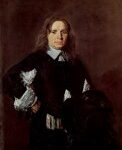
Date of Birth
1412
Place of Birth
Château de Châtillon sur, Loire, Rhône-Alpes, France
Towns / Cities Moved Into
Château de Châtillon sur, Loire, Rhône-Alpes, France |
Châtillon Sur, France
Known Occupation
seigneur de coligny, seigneur d' Andelot
Religion
-
Death Information
Year of death
August 24, 1437
Place of death
Chatillon Sur, France
Cause of death
-
Obituary

Parents

Jacques Coligny

Hugnette Coligny
Marital Status


Married Catherine Lourdin Saligny
June 12, 1437
Chatillon Sur, France
Siblings

Children







Narrative / Story
In the verdant landscapes of Rhône-Alpes, France, a child named William Coligny was born in 1412, within the historic walls of Château de Châtillon sur Loire. His early years were cradled in a period marked by the Hundred Years’ War, a time when France’s soul was embattled and its future uncertain.
William grew up in a noble family, the son of Jacques De Coligny and Hugnette De LaBaume. His life, from its inception, was intertwined with the feudal system that dominated medieval France. As a young man, he inherited the titles of seigneur de Coligny and seigneur d’Andelot, roles that came with significant responsibilities and influence.
During his youth, William would have been acutely aware of the socio-political turmoil surrounding him. The era was marked by Joan of Arc’s heroic endeavors, a young woman who, like William, was born around 1412. Joan’s divine mission to save France and her role in the Siege of Orléans would have been a topic of much discussion and awe in William’s circles.
In 1437, William’s life took a romantic turn when he married Catherine Lourdin Saligny in Châtillon Sur, France. Their union was a blend of love and strategic alliance, common in noble families of the time. Together, they had a large family, including Jean III, Lourdin, Renaud, Marie, Louise, Jacques, and Antoine De Coligny.
William’s life as a seigneur was not just about managing lands and titles. It involved navigating the complex socio-economic structures of medieval France. As a noble, he would have been involved in local governance, military duties, and the management of his estates. His life, however, was not immune to the challenges of his time. The ongoing war, the threat of disease, and the feudal system’s inherent inequalities would have been constant companions.
The Coligny family, like many of their status, would have been insulated from many of the era’s hardships faced by the peasantry. However, they were not entirely shielded from the socio-economic issues of the time. The Hundred Years’ War brought about significant economic strain, impacting trade and agriculture, which would have affected their estates and the people under their care.
William’s life was also a testament to the migrations and movements typical of the nobility. From Château de Châtillon sur Loire to Châtillon Sur, these moves, though not vast in distance, were significant in terms of managing and overseeing different lands and responsibilities.
Sadly, William’s life was cut short. He passed away on August 24, 1437, in Châtillon Sur, France. The cause of his death remains unrecorded, a common occurrence in an era when medical understanding was limited. He was laid to rest in a location that remains a part of his historical narrative, though the specifics are lost to time.
In reflecting on William Coligny’s life, one sees a tapestry of nobility, responsibility, and the challenges of living in a period of great turmoil and change. His story is a window into a time when France was forging its identity through war and strife, a time when figures like Joan of Arc emerged to shape the course of history.